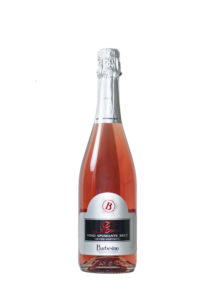Gli spumanti/1
Sparkling wines are defined as wines characterised, at the time of uncorking, by the production of more or less persistent foam: When the cork is removed, since the atmospheric pressure is lower than that of the bottle, the wine gradually releases the carbon dioxide Dioxide contained in it, in the form of bubbles.

Traditionally, Pinot (black, white) and chardonnay-in addition to Moscato Bianco di Canelli for Asti Spumante-have been used for the production of these wines-but in recent years they have been experimented with, sometimes with interesting results, many other Vines, like the spumante that our company proposes: A Brut rosé made from the Barbesino wine, that is, the union of three different grapes (Barbera, Grignolino and Freisa), vinified with the maceration in white, technique that we have seen in this article https://www.mauroreivini.it/processi-3-la-vinificazione/.
When the production technique foresees the intake of bottled foam we have the sparkling Champenois method (called in classic or traditional Italy); If the process is carried out by autoclaving, the method is called Charmat or Martinotti, from Piedmont who invented it.
Once there were also the sparkling wines obtained by adding carbon dioxide to the wine, but today Italian legislation prohibits this practice: the sparkling wines must be produced exclusively with the use of yeasts. These are the people responsible for the fermentation of sugars and their consequent transformation into alcohol and carbon dioxide, which, developing in an hermetically closed environment (bottle or autoclave), gives rise to the so-called foam outlet.
The grapes to be used for the production must be harvested at a stage of maturation not too advanced: very ripe grapes have more tender skins, which can yield excess color during pressing. Moreover, since in the phase of fermentation it will not be possible to resort to massive doses of sulphur dioxide (which would hinder the development of yeasts), the protective action will be entrusted to the acidity of the wine, higher in the case of grapes not very ripe.
In the next article we will see the difference between the production of sparkling classic method and sparkling Charmat method.
